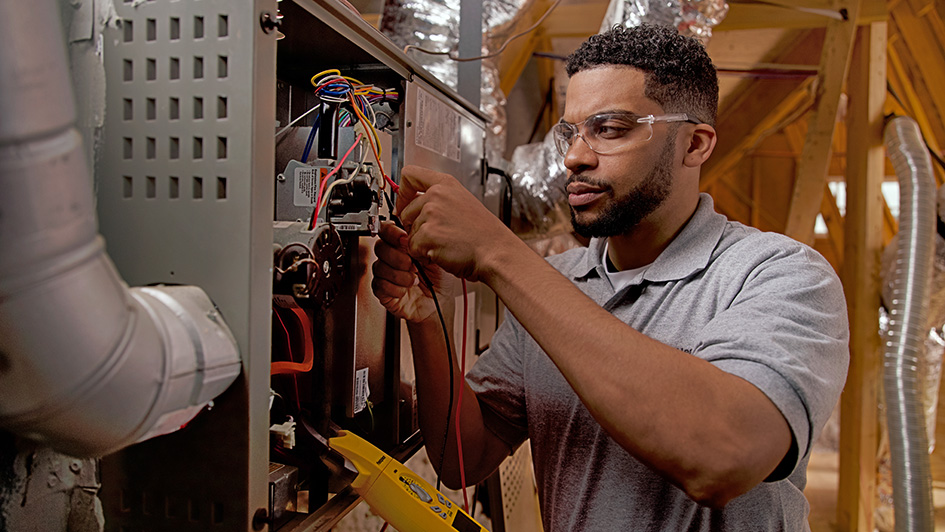
A furnace is usually a background player for your home, helping keep you warm in the cold winter months. It often won't be noticed until something breaks down.
One root cause might be that your furnace has a cracked heat exchanger. It’s a potentially dangerous issue, so it’s worthwhile to learn the evidence of a cracked heat exchanger and what you should do if you believe that may be the problem.
What Is a Heat Exchanger in a Furnace?
A heat exchanger helps transition heat from the combustion chamber of your furnace to the air that circulates inside the ventilation. It typically does this with coils or tubes that heat up the air while acting as a barrier to keep gas produced in the combustion chamber, called flue gasses, from escaping out into your home.
Is a Cracked Heat Exchanger Dangerous?
Because of its key role, it isn't surprising that a damaged heat exchanger can pose a risk. A crack in the heat exchanger can allow dangerous gasses – like carbon monoxide, which can be lethal – to flow through your home.
For this reason, do NOT turn on your heater if you suspect you're dealing with a cracked heat exchanger, as this could make the entire family sick. Call an HVAC professional immediately if you think your furnace has a cracked heat exchanger that should be repaired.
Four Signs of a Cracked Heat Exchanger:
- Furnace shuts off: A cracked heat exchanger may cause your furnace to turn off.
- Odd Smells: If the air coming out of your furnace has a powerful chemical odor, it might be evidence gasses are slipping through cracks in your heat exchanger. These byproducts, which may smell like formaldehyde, are a significant warning sign.
- Carbon monoxide alarm goes off or you notice health problems: If a cracked heat exchanger is emitting carbon monoxide inside your home, your carbon monoxide alarm may go off or family members might start experiencing signs of carbon monoxide poisoning. Symptoms include headaches, dizziness, weakness, nausea, vomiting or feeling tired. If your alarm goes off or you feel sick, get out of the home as soon as you can and then call for help.
- Soot: If you notice black sooty accumulating near the exterior of your furnace, it’s an indication something could be seriously wrong.
What You Should Do if a Furnace Heat Exchanger is Cracked
If you worry your furnace has a cracked heat exchanger, hire a professional experienced in furnace installation Thedford right away so they can inspect your system and, if needed, perform a furnace heat exchanger replacement. Costs will vary depending on the situation, but estimates can roughly suggest $1,000 to $3,000.
However, the good news is that heat exchangers are often protected by the warranty. You’ll want to check the warranty paperwork on your furnace, as while the warranty won't always cover the entire cost of repairs, it could significantly lower your bill.
How to Prevent a Cracked Heat Exchanger in Your Home
One of the easiest ways to avoid problems in your furnace overall is with consistent furnace maintenance. Furnaces offer the most benefits when they run efficiently. Hiring a skilled professional to examine your furnace for broken-down parts, clogs in the air filters and other potential problems can keep you from getting a big bill later on.
It’s also a good idea to review your furnace filters every few months – it’s encouraged some filters be changed every 90 days or sooner if they are dirty or grimy. While the filters aren't a part of the heat exchanger itself, the strain of drawing air through a clogged filter makes the entire furnace work harder to complete its job. And the harder your furnace needs to run, the more strain components like the heat exchanger will sustain.
